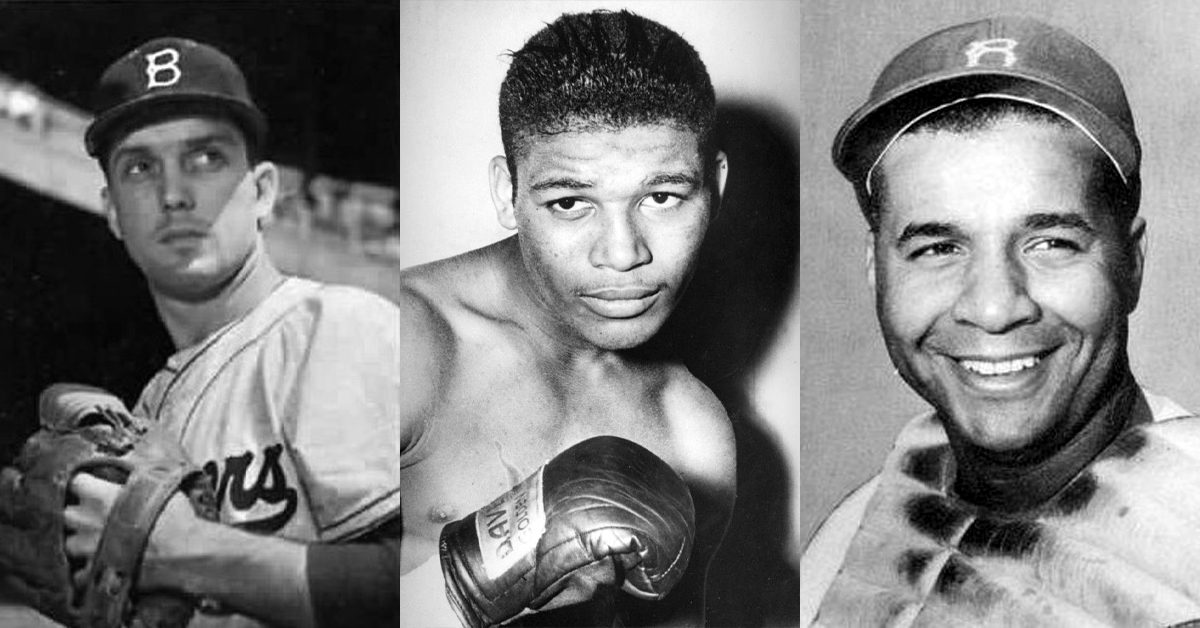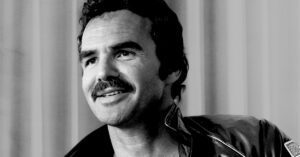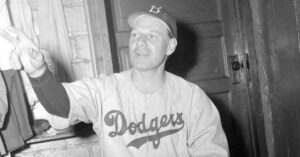Beloved and respected, Carl Erskine, now age 97, was a top pitcher who spent a dozen years spanning his entire major league career with the Brooklyn and Los Angeles Dodgers. He threw two no-hitters and was a mainstay star of those 1950’s storied “Boys of Summer” Dodgers teams which won six National League pennants and the 1955 World Series. He has written TALES FROM THE DODGER DUGOUT to recount some memorable moments from his career.
The flamboyant Sugar Ray Robinson was a professional boxer who fought successfully in several divisions, and incredibly competed over a quarter century. He has long been regarded by many as pound-for-pound the greatest boxer of all time. In 2006 the United States Postal Service honored Robinson by featuring him on a commemorative stamp.
Robinson is in the boxing Hall of Fame, and Roy Campanella is enshrined in baseball’s Hall of Fame.
“Campy,” like Erskine, spent his entire major league career with the Dodgers. He was a catcher, and caught the two no-hitters Erskine threw, as well as the game where Erskine struck out 14 New York Yankees to set a World Series record.
Campanella was so great that he won three Most Valuable Player awards in five years. He might have won more except that his career was shortened unfairly on two sides: being black, he could not compete in the majors until Jackie Robinson first broke the color line, and then only a decade later a car accident left Campanella paralyzed, which of course ended his playing days.
“During the 1950’s,” Erskine remembered, “New York was the center of the boxing world or at least had a strong identity with the sport. Harlem was home to one of the most popular fighters of his day — Sugar Ray Robinson. Sugar Ray was a champion middleweight and one of the most handsome and best-dressed athletes in the sports world. As if he needed more attention, he owned a big Easter-egg lavender Cadillac. When that Caddy drove down 125th Street in Harlem, everybody knew Sugar Ray was in town.
“Roy Campanella was at the top of his game in baseball and decided to open a liquor store in Harlem on 125th Street. His store had a signature six-year-old bourbon whiskey called Campy’s Old Peg. (I was always surprised that baseball permitted Campy to own a liquor store because there were restrictions on active players endorsing hard liquor.)
“But not to be outdone by Sugar Ray, Campy bought an El Dorado Cadillac and had it painted gold — Incan Gold. Whenever the folks in Harlem saw that gold Caddy, they knew Campy was there and hurried in for an autograph and maybe a bottle.”
The Cadillac was not the car involved in Roy Campanella’s accident, it was a rented 1957 Chevrolet sedan which skidded on a patch of ice.
Each in his own way, the lives of these three sports giants have entertained, but more importantly, have inspired millions.




